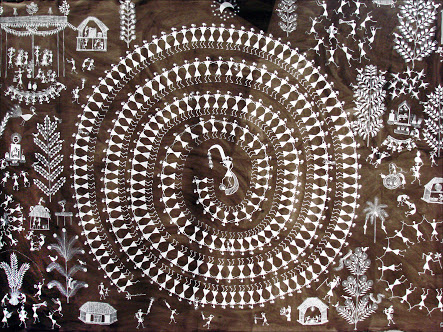
The trouble with the of the origin of families is that no one knows
– Kathleen Gough
In her 1971 essay, The Origin of the Family, Kathleen Gough traces the origins of the family down the evolutionary tree — from monkeys, to apes to humans — and then across the plains of social development: from family structures in agricultural economies to those in industrial economies; from villages to towns to cities. Through all this she defines the family as “a married couple or other group of adult kinfolk, who cooperate economically and in the upbringing of children, and all or most of whom share a common dwelling.”
At the heart of the family is sexuality, closely monitored, deliberated on and controlled in the belief that the health of this ‘family-unit’ contributes to the health of communities, that of race, of nations and perhaps of the world. This issue of In Plainspeak peeks closely at this family, its changing structures, its many shapes, sizes and forms and examines how sexuality has changed and evolved with our understanding of family.
In the Issue in Focus, Pooja Badrinath takes the family apart and extracts the individual, drawing connections between the sexualities of men and women to their family and wondering where in all this, one can fit ‘choice.’ What are we afraid of, she asks, and the question echoes across many articles in this issue.
Families are usually forged together around marriages, and female sexuality often emerges at the centre of this discourse. In the I-column, Deepa Ranganathan writes about challenging the norm by being single at 26. This article is also available in Hindi.
Being in a relationship can also be tricky as two other articles under the I-Column note. Shivani Gupta writes about the ‘odd couple’ and the travails of having to explain oneself to a society that is enticed with the idea of ‘perfect coupledom,’ and Bharti Kannan writes about negotiations a woman must make with her family, when they try to arrange her marriage.
Under Voices Almas Shamim continues to ponder about sex and sexuality outside the family structure and asks why the Vogue, My Choice Video created such a furor over sex outside marriage. Sarah Soysa writes about how this family structure is shaped by our notions of culture, religion and nation. Both these articles explore how female sexuality is controlled so the family can turn into the perfect nest to birth and raise children.
If families come together to raise children, then they also strictly monitor them, imbuing in each of them a sense of morality about sexuality. Ketaki Chowkani writes about the conversations parents are learning to have with teenage children in her column for Voices, whereas Shikha Aleya muses over the conversations parents refuse to have in her Review of parenting blogs in India.
In the Interview we have some brilliant commentary on family by Pramada Menon. Responding to questions put to her by Radhika Chandiramani, she speaks about everything from the secrets that families keep to the new, emerging non-conventional families that offer love, support and a sense of belonging.
Brushstrokes speaks to such sentiments showcasing two Californian weddings where an Indian woman married her girlfriend and an Indian man, his boyfriend. It raises hope that elsewhere too people might be able to form families of their choice.
In spite of the comfort that families may bring, there are uncomfortable questions that we need to address: domestic violence for one. The Video Page features Babul, a video by Breakthrough that shows what violence looks like through the eyes of a young child trying to make sense of the families around her.
In the Corners, we have something new: the Humour Corner, which features Kanan Gill and Biswa Kalyan Rath’s review of Hum Saath Saath Hain, Bollywood’s take on ‘Family values,’ and in the TARSHI Corner, we have the final article from the #TalkSexuality Campaign for which we partnered with Youth Ki Awaaz.
We also have two posts about diverse forms of families under the Blogroll. While Paromita Vohra writes about the many new definitions of the family in her article for Live Mint, Forward Together puts together Mothers’ Day cards that show that families come in all shapes and sizes, and motherhood does not mean the same thing to everyone who identifies as a woman and a mother.
Happy Reading!
The TARSHI Team
Cover Image: Wikimedia